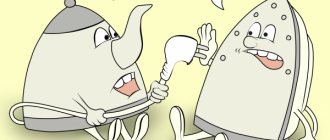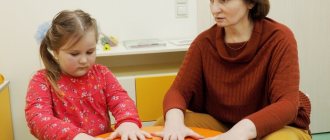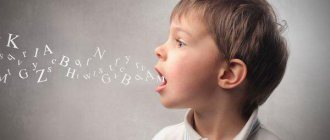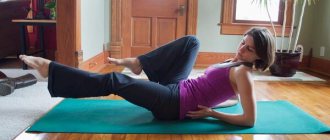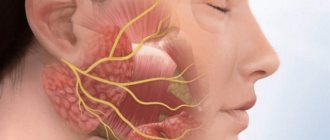Dysarthria is a speech disorder. It occurs due to damage to the parts of the brain that are responsible for connections with the articulatory apparatus. One of the most common and simplest forms is erased dysarthria. It is diagnosed when the child reaches 5 years of age. The baby's speech is slurred, he distorts or replaces sounds, he has poor diction - these are the signs of this disease.
In the article we will talk about correctional work for dysarthria, features of sound production, complex treatment and prevention of the disease.
Principles of speech correction for dysarthria
Speech therapists use several principles when working with children. Here they are:
- Individual approach. The specialist evaluates the compensatory capabilities of the little patient - what articulatory movements have been preserved, what sounds and syllables the baby pronounces correctly;
- From simple to complex. Correction always begins with those sounds that the child pronounces best. This sequence of sound production for dysarthria allows you to achieve better results.
- Long practice of each sound. Speech correction in children with dysarthria requires much more time than other speech therapy problems.
Corrective work includes the following stages: production, automation and differentiation of sounds. But the very first task of a speech therapist is to teach the child to distinguish them by ear.
What to do if a child is diagnosed with dysarthria: advice from a speech therapist
Some parents are faced with the fact that their child - natural or adopted - has speech problems and, hearing the word “dysarthria”, feel confused. What is dysarthria, why does it occur and how to correct it, says Resource specialist, speech therapist of the highest category, member of the Russian Dyslexia Association Galina Orlova.
− Dysarthria is a disorder of the pronunciation side of speech, which is associated with damage to the central part of the speech motor analyzer and a violation of the innervation of the muscles of the articulatory apparatus. Simply put, the child cannot fully perform the movements necessary for speech. Sound pronunciation suffers from this, explains Galina. - In milder cases, this is a distortion of certain sounds. In severe cases of the diagnosis, omissions and replacement of sounds may be noticed. The pace and expressiveness of speech are impaired.
Dysarthria can also be characterized by the presence of paralysis and paresis of the organs of articulation. In this case, incomprehensible speech is a consequence of the diagnosis, up to the absence of speech due to complete paralysis of the speech motor muscles - anarthria.
The causes of dysarthria can be different - deviations from the norm during intrauterine development due to toxicosis, hypertension, nephropathy in the mother, infectious diseases suffered by a woman during pregnancy, as well as asphyxia of newborns, rapid or prolonged labor, mechanical obstetrics, a long anhydrous period in childbirth
From the very first days of life, such children are observed by a neurologist. They are often prescribed medication, massage and other rehabilitation procedures.
− How to recognize dysarthria?
− An attentive parent may suspect it by the child’s unusual facial expressions, profuse salivation, the shape and position of the tongue, the ability to fix an articulatory position, and sound pronunciation.
− When should you start working with dysarthrics?
− It is advisable to begin speech therapy work with any speech disorder in early preschool age. The earlier the disease is diagnosed, treatment and corrective classes are started, the greater the chances of success.
− What should parents do if their child is diagnosed with dysarthria?
— The first step, of course, is an examination by a neurologist. There are no special medications to combat dysarthria. The doctor only corrects some neurological symptoms with the help of medications. It is also important to consult a speech therapist who knows the technique of speech therapy massage, who, after a full examination, will give a conclusion and recommendations.
In addition, experts advise developing fine motor skills. You can assemble puzzles and Lego sets, sculpt from plasticine - there are many games that develop little fingers. You can use non-traditional methods of influence, such as su-jok therapy. The simplest method of su-jok therapy is training with special massage balls.
Logorhythmics classes are recommended for children two to three years old, for example, according to Zheleznova’s method. To correct dysarthria in children five years old, a speech pathologist is involved in the classes.
− What is the focus of the speech therapist’s work in the classroom?
— The specialist is engaged in the development of the prosodic side of speech - rhythm, strength, timbre, melody, tempo, logical stress, diction, as well as articulation and sound pronunciation, auditory attention, phonemic hearing, correction of speech breathing. The speech therapist will also pay attention to the normalization of muscle tone in the articulatory muscles and the development of voluntary facial movements.
If you do not have the opportunity to visit a speech therapist, then you can work with your child at home on your own, having previously completed a course with a specialist.
I will give examples of some elements of speech therapy massage and self-massage: take turns puffing out our cheeks, retracting our cheeks; close and open your mouth, click your teeth; suck on a small piece of sugar or candy; imitate the resorption of a lollipop; lick your lips; We hold a piece of bandage or gauze with our teeth for a long time; the adult’s task is to try to carefully remove the fabric.
It is also important to perform a complex of articulatory gymnastics - these are the “Proboscis” exercises (pull your lips forward, teeth and lips are closed, hold for five seconds), “Fence” (lips in a smile are tense with the mouth slightly open, teeth are clenched, the lower jaw is in a calm state, hold for five seconds) and their alternation, “Window” (with each count we open and close our mouth), “Spatula” (when smiling with an open mouth on a relaxed lower lip, place the tongue flat, hold for five seconds), “Needle” (smile with an open with our mouth, we put our tongue forward, trying not to bend it upward), “Needle shovel” (alternating exercises), “Clock” (we smile with our mouth open, stick out our tongue and make movements to the right and left, while touching the corners of our mouth with our tongue), “ “Swing” (smile with an open mouth, the tip of the tongue resting either on the upper or lower teeth), “Horse” (we click the tip of the tongue, imitating the clatter of hooves).
Over the years of work, I have often met children diagnosed with dysarthria of varying severity. This type of speech disorder has become a global problem in recent years, so it is extremely important to identify disorders in time and consult a specialist. But parents should know that correctional work with dysarthric children should not be limited to classes with a speech therapist. For the best results, this work should be continued at home, on a walk and in any joint activities.
Press service of the Department of Labor and Social Protection of the Population of Moscow
Stages of correction of sound pronunciation disorders
The speech therapist adheres to a strict sequence of sound production for dysarthria. Corrective work consists of 6 stages.
First: the specialist prepares the articulatory base for the production and pronunciation of palatal, sonorant, hissing and whistling sounds. When the baby masters some of them, the speech therapist moves on to working on them. It involves kinesthetic, auditory and visual control. Here is an example of a speech therapist’s instructions to a small patient: “Look in the mirror and repeat after me,” “Look in the mirror and do the exercise,” “Look at yourself in the mirror, stretch out your lips.” This feature of sound production gives good results.
This approach is necessary to reduce the apraxic disorders that accompany dysarthria. In general, the first stage is the foundation for the further development of sound pronunciation skills.
Second: the speech therapist determines the sequence of correction. He assesses which articulatory structure the patient has “mature”. Many children with motor and speech disorders are better at producing more complex sounds, such as hissing sounds. But the patient can master lighter whistling sounds, with which it is recommended to begin correction, later.
Third: the specialist stimulates or plays a certain sound. When staging, he uses classical techniques - staging by imitation, mechanical or mixed method.
Fourth: consolidation, or automation. This is the most difficult stage in all correctional work. It takes the most time. Often children master a sound and pronounce it in isolation, but make mistakes in speech. Therefore, after the production stage, the speech therapist focuses on working on isolated sound pronunciation, and then connects words with different syllable structures. Thus, the child pronounces the sound at the beginning, middle or end of words. Then the speech therapist connects sentences in which the sound being studied is concentrated.
The speech therapist selects lexical material individually. It must be appropriate for the baby’s age and capabilities, and also not include sounds that he cannot yet pronounce or distort.
Fifth: separation of delivered and oppositional sounds. First, the speech therapist suggests 2 syllables, then increases to 3. for example, sa - sha, sta - shta, etc. After this, he works on pairs of words with different syllable structures.
Sixth: developing communication skills. Another difficult stage. Often children communicate in a speech therapist’s office, but in front of other people and outside the office, the acquired speech skills are lost, and the child begins to speak “the old fashioned way.” In order to develop communication skills, the painstaking work of a speech therapist is necessary, but without the desire of the child himself, success cannot be achieved either.
The development of communication skills in dysarthria is facilitated by techniques such as memorizing rhymes, retelling or writing stories.
Symptoms and treatment
The main symptoms include the following:
- incomprehensible, slurred speech;
- spastic manifestations in the articulatory muscles (neck, lips, face, tongue are constantly tense, articulation is limited, lips are tightly closed);
- hypotonia of the articulatory apparatus (lips do not close, tongue lies motionless in the mouth, mouth is slightly open, increased salivation);
- dystonia of articulatory muscles (when a child tries to talk, his muscle tone goes from low to high);
- slurred pronunciation;
- in difficult cases, the child misses sounds, replaces them or pronounces them distorted; Source: O.Yu. Fedosova Features of sound pronunciation of children with mild dysarthria // Speech therapist in kindergarten, 2005, No. 2, pp. 36-41
- slowness of conversation;
- inability to speak (in severe forms);
- nasal voice without signs of a runny nose;
- change, omission, replacement of some sounds with others;
- fading of a phrase towards the end of its utterance, rapid breathing during a conversation due to lack of air;
- very high, almost “squeaky” voice;
- a fast or very slow flow of words, while the child cannot change the tone.
Gymnastics for making sounds
Finger games must be included in the correction program for dysarthria. They can be done at home with your parents. For example, these:
- Reading book “Finger Boy, Where Have You Been?” The child opens his palm and, for each line of the rhyme, touches each finger with his thumb - index, middle, ring and little fingers.
- "We depict animals." This is an analogue of the “Shadow Theatre”. The kid opens his palm, sticks his thumb up - imitates a dog. Raises and lowers the little finger - the dog barks. And if you press your ring and little fingers with your thumb to your palm, and raise your middle and index fingers up, you will get a bunny that moves its ears.
- Hand massage. The technique depends on the tone of the hands.
If you have spasticity, you need to relax: stroke your arms: from your fingertips up to your palms and to your shoulders. Then repeat the movement from top to bottom.
When hypotonicity occurs, muscles need to be strengthened. To do this, parents actively knead and rub their fingers and palms. Stimulating movements.
A set of articulation exercises
The exercise includes 5 exercises and can also be done at home.
“Horse” - clicking the tongue. This is a very useful and effective exercise. Not all children get it right away.
“Pancakes” - the baby opens his mouth slightly, spreads his tongue into a flat pancake.
“Snake” - the child imitates the sting of a snake - the tongue is just as sharp. Then he sticks it back and forth.
“Tube” - the baby tries to roll his tongue into a tube.
Another exercise is to try to reach the tip of your tongue to your nose and then to your chin.
A set of breathing exercises
Includes 2 exercises. Parents can easily do them with their baby at home.
"Racing" . Place two cotton balls on the table. The parent blows on one balloon, the child on the other. The one who moves his ball the greatest distance wins.
"Magic Breath" . Insert pieces of cotton wool into the baby's nostrils. The main thing is not deep! Ask him to exhale and at the same time hold the cotton wool - it should not fall out.
Another version of breathing exercises is according to A.N. Strelnikova. The essence of gymnastics is to take a sharp breath through your nose every second and do the exercises at the same time. The inhalation is noisy and strong, and the exhalation is natural, imperceptible.
There are several rules: with each inhalation, lower your shoulders and close your nostrils tightly, as if someone is pressing on them.
Gymnastics should be a joy, so you need to do it until the first signs of fatigue. There is no need to force your child if he does not want to study.
Gymnastics is designed for adults, so the duration of the lesson and the number of approaches is best agreed upon with a speech therapist.
We train to navigate in space
- “Whose traces?” . Pictures with traces of hands and feet are needed. The baby must determine which arm or leg is right and which is left.
- "Supermarket" . The parent asks the child to arrange the goods: “on the shelf”, “near the cash register”, “to the right of the cookies”, “under the counter”.
- Counting sticks. Can be replaced with matches. The parent makes some figure out of them, and the baby makes a similar one according to the image.
This complex can also be performed at home.
Methods for diagnosing dysarthria
Dysarthria is usually preceded by a primary neurological disease, such as cerebral palsy. Therefore, before starting classes with a speech therapist, you need to consult a neurologist. Only he can diagnose the disease.
Diagnosis includes electroencephalography, MRI of the brain, electroneurography or other examinations. After this, the neurologist refers the patient to a speech therapist. In turn, the specialist, based on speech therapy tests, will determine the form and degree of the speech disorder.
Types, levels and forms of speech dysarthria in children
Table of types of disease by location of the lesion
| Name of the pathology form | Peculiarities |
| Cerebellar | Occurs when the cerebellum is involved in the process. Speech is drawn out, slurred, slow, the volume constantly changes, the child’s tongue trembles, he speaks with shouts, as if chanting slogans. Additional symptoms: poor balance, unsteady gait. |
| Bulbarnaya | It is caused by paralysis of the articulatory muscles, as well as the nerves - vagus, glossopharyngeal, ternary, sublingual and/or others. Children lack some reflexes, sucking and swallowing, facial expressions are impaired, and it is difficult for them to chew solid food. There is also increased salivation, simplification (all consonants “merge” into one fricative) and slurred sounds, a nasal, hoarse sound of the voice, sometimes its absence. |
| Pseudobulbar | Occurs with centralized paralysis (spastic) of muscles and their hypertonicity. Speech becomes monotonous, it is difficult for the child to lift the tip of the tongue, move it to the side, or hold it. There is increased salivation, soreness, and swallowing disorders (increased reflex). Speech is slurred, nasal, the pronunciation of hissing, whistling and tone sounds is sharply impaired. |
| Extrapyramidal | It occurs when the function of the subcortical nuclei is disrupted, and therefore received a second name – “subcortical”. Speech is slightly nasal, slurred, and slurred. There are involuntary muscle movements, facial expressions, and articulatory spasms. The timbre and strength of the voice changes, the pace of conversation is disrupted, and there are occasional guttural cries. |
| Cortical | Damage to those areas of the cerebral cortex that are responsible for articulatory muscles. Children pronounce words correctly in structure, but with impaired pronunciation of syllables. There is difficulty breathing during conversation and voice. |
| Cold | Manifests itself as one of the symptoms of myasthenia gravis (fatigue and weakness of striated muscles). Speech disruptions occur when the air temperature in the room where the child is located increases or decreases. |
Classification according to the degree of development of pathology:
- I (erased) - only a speech therapist can identify incorrect pronunciation during examination and examination, almost complete recovery is possible;
- II – pronunciation is clear, but defects are noticeable;
- III – the child is understood only by close people, strangers rarely;
- IV – even relatives do not understand the pronunciation or there is no speech, most often considered within the framework of cerebral palsy.
Important! The erased form is characterized by difficulty chewing solid food. Parents should not change their child's diet because of this. It is necessary to gradually accustom him to chew on the same basis as other people. Source: E.F. Arkhipova Erased dysarthria in children: a textbook for university students // M.: AST: Astrel: KHRANITEL, 2006, p.319
Complex treatment of the disease
Only an integrated approach gives good results. Here are the activities included in treatment:
- Speech therapy classes: development of fine motor skills of the hands, breathing, motor skills of the speech apparatus, voice (timbre, intonation, strength), training in correct sound pronunciation;
- Physiotherapeutic procedures: physical therapy, massage, acupressure, etc.;
- Drug treatment. Nootropic drugs are prescribed;
- Psychotherapy. This group includes sand therapy, play therapy, and isotherapy.
If parents notice speech impairments in time and seek help from doctors, the baby has every chance of getting rid of the disease. But provided that there are no pronounced lesions of the nervous system.
Speech therapy exercises for erased dysarthria
Office of psychological and pedagogical correction of Lebyazhinsky district
Design of materials for information stands:
Speech therapy exercises for erased dysarthria.
Prepared by speech therapist teacher: Mukhambetova F.B.
Akku village 2021, December
According to research by R.I. Martynova, children with a mild form of dysarthria lag behind in physical development significantly more than children with functional dyslalia. In children with an erased form of dysarthria in the speech system, neurological symptoms were identified: erased paresis, hyperkinesis, disorders of muscle tone in the articulatory and facial muscles. Neuropsychiatric disorders were significantly more detected in mild forms of dysarthria than in functional dyslalia. That. The work of a speech therapist with children with an erased form of dysarthria should not be limited to the production and correction of defective sounds, but should have a wider range of correction of the child’s speech as a whole.
The peculiarities of the content of speech therapy work with an erased form of dysarthria are reflected in the specifics of planning correctional work: an additional preparatory stage is introduced, which is necessary to normalize motor skills and the tone of the articulatory apparatus, and the development of prosody.
Having studied the methods of L.V. Lopatina, N.V. Serebryakova, L.A. Danilova, I.I. Ermakova, E.M. Mastyukova, E.F. Arkhipova, I selected and systematized practical material for all sections of the preparatory stage, taking into account the speech and non-speech symptoms of dysarthria.
1) Normalization of muscle tone of the articulatory apparatus - differentiated speech therapy massage (method by E.F. Arkhipova)
For children with hypertonicity and hyperkinesis, a relaxing massage is recommended. In such children, the face is frozen, the muscles are stiff, the muscles of the lips are stretched and pressed against the gums, the tongue is thick and shapeless, the tip of the tongue is not pronounced. Massage techniques: patting, tapping, light vibration, stroking for no more than 1.5 minutes. All movements go from the periphery to the center: from the temples to the center of the forehead, nose, middle of the lips.
For children with hypotension - a strengthening massage. In such children, the facial muscles are flabby and loose, the mouth is open, the lips are flaccid, the thin tongue lies at the bottom of the mouth. Techniques: deep rubbing, kneading, stroking with force for up to 3 minutes. All movements are from the center of the face to the sides: from the forehead to the temples, from the nose to the ears, from the middle of the lips to the corners, from the middle of the tongue to the tip.
2) Normalization of motor skills of the articulatory apparatus:
exercises for masticatory muscles (met. I.I. Ermakova)
- Open your mouth and close it.
- Move the lower jaw forward.
- Open your mouth and close it.
- Puff out your cheeks and relax.
- Open your mouth and close it.
- Lateral movements of the lower jaw.
- Open your mouth and close it.
- Pull your cheeks in and relax.
- Open your mouth and close it.
- Bite your upper lip with your lower teeth
- Open your mouth with your head thrown back, close your mouth with your head straight.
gymnastics for voluntary tension and movement of lips and cheeks (met. E.F. Arkhipova)
- Inflating both cheeks at the same time.
- Puffing out the cheeks alternately.
- Retraction of the cheeks into the oral cavity.
- The closed lips are pulled forward with a tube (proboscis) and then returned to their normal position.
- Grin: the lips are stretched to the sides, pressed tightly against the gums, both rows of teeth are exposed.
- Alternating grin-proboscis (smile-pipe).
- Retraction of the lips into the oral cavity with the jaws open.
- Lifting only the upper lip, exposing only the upper teeth.
- Retraction of the lower lip, exposing only the lower teeth.
- Alternately raising and lowering the upper and lower lips.
- Imitation of rinsing teeth.
- Lower lip under upper teeth.
- Upper lip under lower teeth.
- Alternating the two previous exercises.
- Lip vibration (horse snorting).
- As you exhale, hold the pencil with your lips.
passive gymnastics for the muscles of the tongue - creating positive kinesthesia in the muscles (met. O.V. Pravdina)
Passive gymnastics is a form of gymnastics when a child makes movements only with the help of mechanical action - under the pressure of an adult's hand. . Passive movement should be carried out in 3 stages: 1 - entering the position (pucker your lips), 2 - maintain the position, 3 - exiting the position. After several repetitions, an attempt is made to perform the same movement one or two more times without mechanical assistance, i.e. passive movement is translated first into passive-active, and then into voluntary, performed according to verbal instructions.
An approximate complex of passive gymnastics:
- The lips close passively and are held in this position. The child's attention is fixed on closed lips, then he is asked to blow through his lips, breaking their contact;
- Using the index finger of the left hand, lift the child’s upper lip, exposing the upper teeth; with the index finger of the right hand, raise the lower lip to the level of the upper incisors and ask the child to blow;
- The tongue is placed and held between the teeth;
- The tip of the tongue is pressed and held against the alveolar process, the child is asked to blow, breaking the contact;
- The child's head is thrown back somewhat, the back of the tongue is raised towards the hard palate, the child is asked to make coughing movements, fixing his attention on the sensations of the tongue and palate.
active articulatory gymnastics - improving the quality, accuracy, rhythm and duration of articulatory movements; An important section of articulatory gymnastics for dysarthrics is the development of more subtle and differentiated movements of the tongue, activation of its tip, delimitation of movements of the tongue and lower jaw.
An approximate set of static articulation exercises for dysarthrics. L.V. Lopatina, N.V. Serebryakova
- Open your mouth, hold it open while counting from 1 to 5-7, close it.
- Open your mouth slightly, push your lower jaw forward, hold it in this position for 5-7 seconds, return to its original position.
- Pull the lower lip down, hold it while counting from 1 to 5-7, return to its original state; - raise your upper lip, hold it while counting from 1 to 5-7, return to its original state.
- - stretch your lips into a smile, exposing the upper and lower incisors, hold the count from 1 to 5-7, return to their original state; - stretch only the right (left) corner in a smile, exposing the upper and lower incisors, hold it counting from 1 to 5-7, return to its original position.
- - raise the right one, then the left one in turn: the corner of the lip, while keeping the lips closed, hold the count from 1 to 5-7, return to its original state.
- - stick out the tip of your tongue, mash it with your lips, pronouncing the syllables pa-pa-pa-pa. After pronouncing the last syllable, he will leave his mouth slightly open, fixing his wide tongue and holding it in this position, counting from 1 to 5-7; - stick the tip of your tongue between your teeth, bite it with your teeth, pronouncing the syllables ta-ta-ta-ta. After pronouncing the last syllable, leave the mouth slightly open, fixing the wide tongue and holding it in this position, counting from 1 to 5-7, return to its original position.
- - place the tip of the tongue on the upper lip, fix this position and hold it counting from 1 to 5-7, return to its original state; - place the tip of the tongue under the upper lip, fix it in this position, hold it while counting from 1 to 5-7, return it to its original state; - press the tip of the tongue to the upper incisors, hold the given position counting from 1 to 5-7, return to its original state; - the movement of “licking” with the tip of the tongue from the upper lip into the oral cavity behind the upper incisors.
- – give the tip of the tongue a “bridge” (“slide”) position: press the tip of the tongue against the lower incisors, raise the middle part of the back of the tongue, press the lateral edges to the upper lateral teeth, hold the specified position of the tongue counting from 1 to 5-7, lower the tongue .
An approximate set of dynamic articulation exercises for dysarthrics. L.V. Lopatina, N.V. Serebryakova
- Stretch your lips into a smile, exposing the upper and lower incisors; Pull your lips forward like a tube.
- Stretch your lips into a smile with your incisors bared, and then stick out your tongue.
- Stretch your lips into a smile with your incisors bared, stick out your tongue, press it with your teeth.
- Raise the tip of your tongue onto your upper lip and lower it onto your lower lip (repeat this movement several times).
- Place the tip of your tongue under the upper lip, then under the lower lip (repeat this movement several times)
- Press the tip of your tongue behind the upper, then lower incisors (repeat this movement several times).
- Alternately make the tongue wide, then narrow.
- Lift your tongue up, place it between your teeth, and pull it back.
- Build a “bridge” (the tip of the tongue is pressed against the lower incisors, the front part of the back of the tongue is lowered, the front part is raised, forming a gap with the hard palate, the back part is lowered, the lateral edges of the tongue are raised and pressed against the upper lateral teeth), break it, then build it again and again break, etc.
- Alternately touch the protruding tip of your tongue to the right, then to the left corner of your lips.
- Raise the tip of your tongue to the upper lip, lower it to the lower lip, alternately touch the protruding tip of the tongue to the right, then to the left corner of the lips (repeat this movement several times).
3) Development of fine motor skills of the hands:
- massage and self-massage of fingers and hands;
- games with small objects: stringing beads, mosaics, small construction sets;
- finger gymnastics complexes;
- developing self-service skills: buttoning and unbuttoning buttons, tying shoes, using a fork and knife;
- classes with plasticine and scissors;
- preparing your hand for writing: coloring and shading pictures, tracing stencils, graphic dictations, working with copybooks;
A set of exercises for self-massage of hands and fingers.
1. Children use the pads of four fingers, which are placed at the base of the fingers on the back of the hand being massaged, and dotted movements back and forth, shifting the skin by about 1 cm, gradually moving them towards the wrist joint (“dotted” movement).
Iron
We'll smooth out the wrinkles with an iron, everything will be fine. Let's iron all the pants of the hare, hedgehog and bear.
2. Using the edge of their palm, children imitate “sawing” in all directions on the back of the hand (“straightforward” movement). The hand and forearm are placed on the table, the children are sitting.
Saw
Drank, drank, drank, drank! Cold winter has come. Let's get some wood for us quickly, let's light the stove and warm everyone up!
3. Rotational movements are made with the base of the hand towards the little finger.
Dough
We knead the dough, we knead the dough, We will bake pies with cabbage and mushrooms. — Should I treat you to some pies?
4. Self-massage of the hand from the palm side. The hand and forearm are placed on the table or on the knee, the children are sitting. Stroking.
Mother
Mom strokes her little son on the head, Her palm is so tender, Like a willow twig. - Grow up, dear son, Be kind, brave, honest, Gain intelligence and strength. And don't forget me!
5. Move the knuckles of your fingers clenched into a fist up and down and from right to left along the palm of the hand being massaged (“straight-line movement”).
Grater
Together we help mom, grate beets with a grater, together with mom we cook cabbage soup, - Look for something tastier!
6. The phalanges of the fingers clenched into a fist make a movement according to the “gimlet” principle in the palm of the massaged hand.
Drill
Dad takes the drill in his hands, And it buzzes, sings, As if a fidgety mouse is gnawing a hole in the wall!
7. Self-massage of fingers. The hand and forearm of the arm being massaged are located on the table, the children are sitting. With “pincers” formed by the bent index and middle fingers, a grasping movement is made for each word of the poetic text in the direction from the nail phalanges to the base of the fingers (“rectilinear” movement).
Ticks
The pliers grabbed the nail and tried to pull it out. Maybe something will work out if they try!
8. The pad of the thumb, placed on the back side of the massaged phalanx, moves, the other four cover and support the finger from below (“spiral” movement).
Lambs
“Byashki”, curly-haired lambs, graze in the meadows. All day long it’s all: “Be and be,” They wear fur coats on themselves. Fur coats in curls, look, “Byashki” slept in curlers, In the morning they took off the curlers, Try to find a smooth one. Everyone is curly-haired, every single one, They run in a curly-haired crowd. This is their fashion, the sheep people.
9. Movements as when rubbing frozen hands.
Morozko
Morozko froze us, crawled under a warm collar, like a thief, carefully penetrated into our felt boots. He has his own worries - Know the frost, but get stronger! Don’t spoil, Frost, why don’t you treat people like that?!
4) Development of general motor skills and motor coordination:
- pantomime (book “Tell Poems with Your Hands”, “Psychogymnastics” by M.I. Chistyakov, “Movement and Speech” by I.S. Lopukhin);
- outdoor games for coordination and coordination of movements;
- special complexes of physical and rhythmic exercises (journal “Defectology” No. 4, 1999)
5) Normalization of voice and speech breathing:
— Breathing exercises by A.N. Strelnikova.
— Exercises for the development of speech breathing
The following exercises are recommended in speech therapy practice:
- Choose a comfortable position (lying, sitting, standing), place one hand on your stomach, the other on the side of your lower chest. Take a deep breath through your nose (this pushes your stomach forward and expands your lower chest, which is controlled by both hands). After inhaling, immediately exhale freely and smoothly (the abdomen and lower chest return to their previous position).
— Take a short, calm breath in through your nose, hold the air in your lungs for 2-3 seconds, then exhale long, smoothly through your mouth.
— Take a short breath with your mouth open and, with a smooth, drawn-out exhalation, pronounce one of the vowel sounds (a, o, u, i, e, s).
- Smoothly pronounce several sounds on one exhalation: aaaaa aaaaaooooooo aaaaaauuuuuu
- Count on one exhalation up to 3-5 (one, two, three...), trying to gradually increase the count to 10-15. Make sure you exhale smoothly. Count down (ten, nine, eight...).
- Read proverbs, sayings, tongue twisters in one breath. Be sure to follow the instructions given in the first exercise.
Practiced skills can and should be consolidated and fully applied in practice.
The tasks become more complex gradually: first, long speech exhalation training is carried out on individual sounds, then on words, then on a short phrase, when reading poetry, etc.
In each exercise, children’s attention is directed to a calm, relaxed exhalation, to the duration and volume of the sounds pronounced.
“Skits without words” help normalize speech breathing and improve articulation in the initial period. At this time, the speech therapist shows the children an example of calm expressive speech, so at first he speaks more during classes. “Skits without words” contain elements of pantomime, and speech material is specially kept to a minimum in order to provide the basics of speech technique and eliminate incorrect speech. During these “performances” only interjections are used (Ah! Ah! Oh! etc.), onomatopoeia, individual words (names of people, names of animals), and later short sentences. Gradually, the speech material becomes more complex: short or long (but rhythmic) phrases appear as speech begins to improve. The attention of beginning artists is constantly drawn to what intonation should be used to pronounce the corresponding words, interjections, what gestures and facial expressions to use. During the work, children’s own imaginations are encouraged, their ability to choose new gestures, intonation, etc.
Also, for the development of proper speech breathing, the following are recommended:
- special exercise games: playing pipes, blowing away small objects, blowing soap bubbles, etc.
- phonetic rhythm by Mukhina A.Ya.;
- voice exercises by Ermakova I.I., Lopatina L.V.
6) Formation of the prosodic side of speech according to met. Lopatina L.V.:
- exercises to develop rhythm (perception and reproduction of rhythm);
- exercises to master the rhythm of words;
- familiarity with narrative, interrogative, exclamatory intonation;
- formation of intonation expressiveness in expressive speech
7) Overcoming sensory impairments:
- development of spatio-temporal concepts in met. Danilova L.A.
- exercises to develop the sense of touch in met. Danilova L.A.
System of classes for preschool children (from 5 to 7 years old)
Development of spatial concepts.
- Determination of basic spatial (prepositional) relations on specific objects. The child, according to the instructions, rearranges the objects in the indicated directions.
- The name of the main spatial relationships in the plot picture.
- Development of constructive praxis.
- Development of spatial relationships in a child’s visual activity.
- Memory training for spatial relationships. Analysis of a picture from memory, taking into account the spatial relationships between objects. A story from memory about the location of objects in space... Training of trace tests of constructive praxis.
Office for the Development of Touch.
- Training to determine the texture of an object. Recognition of texture by touch during preliminary display.
- Determination of the texture and shape of real objects without prior demonstration.
- Differentiation by touch of different geometric bodies: a) the same shape, but different thicknesses (flat and volumetric); b) the same shape and thickness, but different sizes (large and small); c) the same size and thickness, but different shapes... The development of this ability is formed in stages:
- Stage I - recognition of three-dimensional figures by touch after preliminary visual familiarization with the figure;
- // stage - recognition of three-dimensional figures of the same texture without preliminary display;
- Stage III - recognition of flat figures of the same texture after visual familiarization;
- Stage IV - recognition of flat figures by touch without display;
- Stage V - recognition of figures by touch of the same shape, but different in texture after their preliminary examination;
- Stage VI - recognition of the shape and texture of an object by touch without prior inspection;
- Stage VII - distinguishing objects of the same shape and texture by size by touch...
 Development of temporal representations.
Development of temporal representations.
- Determination of the sequence of seasons, clarification in pictures and in verbal descriptions of the distinctive features of each season.
- Sequence of periods of the day, analysis of regime moments.
- Practicing the concepts of “older - younger”.
To form generalizations, exercises are carried out to develop generalizations by the method of elimination (the game “The Fourth Extra”).
- / stage - 4 objects are laid out in front of the child, united by certain properties.
- // stage - eliminating unnecessary objects in the picture.
To develop an understanding of cause-and-effect relationships
a guessing game is used... During the game, independent observations and certain concepts about objects are formed, cause-and-effect relationships are revealed.
As many years of observations have shown, the proposed correction methods can significantly develop unformed functions and prepare the child to perceive
9) Development of phonemic hearing according to met. T.A. Tkachenko, L.V. Lopatina, N.V. Serebryakova
Speech therapy work for erased forms of dysarthria at the preparatory stage ensures the effectiveness of correction at all subsequent stages of correctional work.
Methods for preventing the disease
Due to the biological factors in the development of the disease, it is worth thinking about its prevention during pregnancy and childbirth. Difficult pregnancy, intrauterine infections, asphyxia, complicated childbirth, injuries in the first months of a newborn’s life - all this can cause speech disorders in the future.
We list the main methods of preventing the disease after the birth of the baby.
First, develop your reflexes. These include gaze fixation and object tracking, auditory concentration, motor activity, and the oral automatism reflex - all of them are very important in the development of the newborn.
Secondly, communicate with the baby. Tactile, visual, auditory sensations - all this is extremely important for its development. Smile at him, talk to him, carry him in your arms, stroke him.
Third, be always there. This is especially true for mom. After all, a newborn needs her closeness, the opportunity to touch her, see her, feel her, and receive a return hug.
Fourth, stimulate the sucking reflex. The more actively and longer the baby suckles at the breast, the better its muscles develop - they become stronger and more flexible.
Fifth, encourage the baby's attempts to communicate. Humming and babbling - this needs to be stimulated.
Sixth, develop fine motor skills. Speech is directly related to fine motor skills and the more dexterous the baby’s hands are, the better. Introduce him to different textures.
Seventh, speak to your baby in your native language. Speak clearly and competently. And encourage him to communicate. Even if he doesn't talk, still try to make him make sounds. If he wants something and shows it with gestures, provoke him to ask for it verbally.
conclusions
Dysarthria is not just a failure to pronounce certain sounds. And you certainly shouldn’t expect a child with such a diagnosis to “talk” like the neighbors’ daughter. This speech disorder is much deeper and more complex, but it is not always a death sentence. The main thing is not to waste time.
This is why turning a blind eye to the problem is a huge mistake as parents. Of course, it is difficult to accept the fact that your child has some kind of impairment. But this must be done precisely for the benefit of the future of your baby. An untreated disease will bring many problems to an adult in social life - from communication to work.
If the disease is detected at an early stage of development, it can be cured. An integrated approach to therapy gives good results. Of course, if there are no gross disorders of the nervous system.
It is even better if it was possible to diagnose the disease when it has not yet made itself felt, that is, before the baby’s first attempts to speak. Such early corrective work will become effective prevention.
What to do? Treatment methods for the disorder
The child must undergo additional classes with a speech therapist (at home or in a special institution) on:
- development of motor skills;
- forming a conversation;
- honing diction;
- correcting the pronunciation of distorted sounds;
- expanding vocabulary;
- development of phonetic hearing;
- memorizing grammatical structure.
Against this background, drug therapy is carried out using nootropics. Medicines in this group specifically affect brain functions: stimulate mental activity, cognitive functions, increase learning abilities, and improve memory.
The package of measures also includes exercise therapy - articulation gymnastics to strengthen the facial muscles, massage, exercises with the hands and fingers.
Sources:
- E.F. Arkhipova. Erased dysarthria in children: a textbook for university students // M.: AST: Astrel: KHRANITEL, 2006, p. 319.
- L.I. Belyakova, Yu.O. Filatova. Diagnosis of speech disorders // Defectology, 2007.
- 3. O.Yu. Fedosova. Features of sound pronunciation of children with mild dysarthria // Speech therapist in kindergarten, 2005, No. 2, pp. 36-41.
The information in this article is provided for reference purposes and does not replace advice from a qualified professional. Don't self-medicate! At the first signs of illness, you should consult a doctor.
